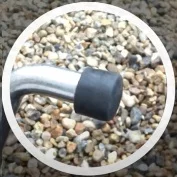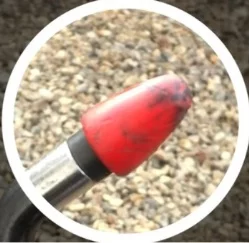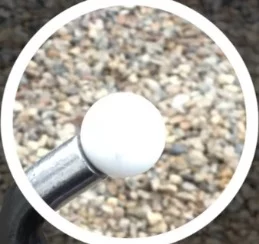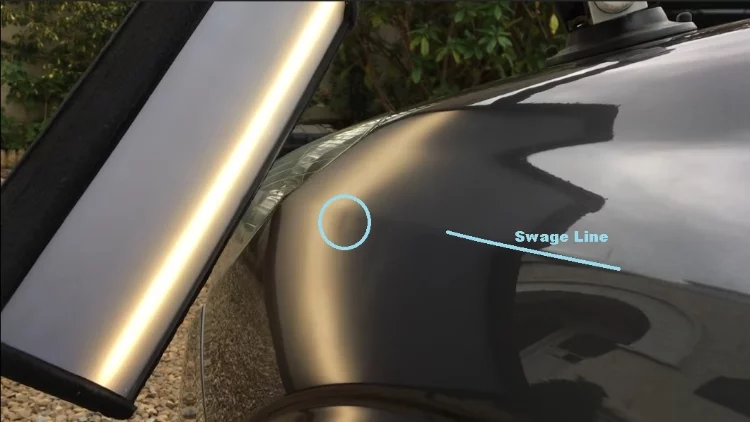How to Fix Crease Dent in Car
by Chris Lewis.
There are two techniques usually the dent removing technicians apply to remove the dents and creases. First method is to remove the dent and to use a filler compound to re-paint that spot, which is quite expensive and has drawbacks like; the spot over the time affects the genuine paint and can be easily spotted by some hawk-eyed professionals. Moreover, it reduces the resale value of the car.
Contents

How to Fix Crease Dent in Car
No one is immune to a dent in their car. Whether it's from parking lot dings or someone else's carelessness, at some point everyone will have to figure out how to fix a crease dent. It might seem daunting, but with the right tools and instructions it's a fairly easy fix. Check out this guide on how to repair a car dent quickly and easily. You'll be back on the road in no time!
The method which requires a lot of patience hard work and using right tools is the PDR (Paint-less Dent Removal) method. It is quite cost effective and is consumer-oriented approach.

The tools which we are using are:
- Torch Light.
- PDR Bars with screw on one end.
- Heat Gun.
- Large Rubber Tip.
- PVC Coated Bullet Tip.
- Rounded Plastic Tip.
- Plastic Vinyl Tip.
- Metallic Bullet Tip
- Ordinary Prop or Fender Blow out tool.
Step 1: Analyzing the Damage
The subject we are using here in this tutorial is a car which has some vertical creases, a small bulge and some minor bulges as well. We have divided the total area of damage to three sections so that we may easily carry the removal process.
Section A, zooming into the section, we can see 4 vertical creases.

Section B consists of a Bulge with a prominent crown

Section C: Here we can see the biggest and deepest crease which has also bent the wheel arch profile.

After examining the three sections closely, now we have the idea how all the damage can be repaired which moves us to the next step.
Step 2: Getting the Tools Behind the Damaged Area
In this case, the damages are just on the top of the front wheel. So, we will remove the trim and a stone guard. Remove any screws or rivets installed. If the creases or dents are anywhere else, you may need to clear that area in order to land your tools there safely.
Step 3: Removing the Dent
Removing the Vertical Creases Shown in Section A
- Start by fixing a torch light to a correct position so that we may get a clearer view of all vertical creases to massage back out.
- Gently warm the area with the heat gun so that the paint may not crack by pushing from behind.
- Take a Large rubber tip and use it to push out the first crease near the headlight from behind evenly from top and bottoms of the crease.
Large Rubber Tip

- Knock down the areas with a rubber tip or plastic bullet tip which come up too high to settle them to their original spot. Continue the pushes from the behind and knockdowns across the crease until it fully disappears.
- For the second and the third creases, we will use the red PVC coated Bullet shaped tip and the white rounded tip. These tips are smaller than the large rubber tip and are ideal to address small dents. Keep pulling behind the crease lines through these tips (per your requirement)
PVC Coated Bullet Tip

- Use the white rounded tip to address the low area which is running through the swage line of the car. Swage line is a hard to push area so the sharp-edged tips may cause the bulge on the body.
Rounded Plastic Tip

- For Hard to push area, so use the white rounded tip to push

- Remove the remaining small creases by using these two tips. That's all for the section A.
Removing the Body Line Creases Shown in Section B
- Use and fix the Fender Blow out Tool or Cheap inexpensive prop to prevent the wheel arch from blowing out when pushing from behind.
- Again, use the heat gun to heat the area to prevent the pushes from cracking the paint.
- Use a 24 Inch double bend tool along with the large rubber tip (shown above) to start pushing out as much of the large damage as this tip will allow.
- Use soft rubber tip on your knockdown to tap down any crowns or high areas to help the metal move back into shape.
- Use plastic Vinyl tip to push up some of the smaller low areas left behind from the large rubber tip. If it leaves some high areas, then tap back down again using plastic bullet tip.
Removing the Large Crease Shown in Section C
- Again, Use and fix the Fender Blow out Tool or a Prop tool to prevent the wheel arch from blowing out when pushing from behind.
- Apply the heat again using heat gun to heat the area to prevent the pushes from cracking the paint.
- Use the Large rubber tip again to take out the dented are as much as you can.
- Now use the Red PVC coated bullet tip to push out the areas left by the large rubber tip.

- Now that most of the creases are gone, tap down the all the remaining high areas.

Step 4: Fine Tuning and Polishing
- Use Metal bullet tip to bring up all the micro lows that are still present on the panel. This part is quite time consuming and needs a hawk eye to work on such a minute level details.
- Use a small amount of cutting compound to fill any surface scratches and marks left from the paint-less Dent removal process.
- Use some ultra-fine polish on the whole panel to bring back the shine in the paintwork.
- Fit back the covers nuts bolts or rivets removed earlier.
Summary of Best Ways to Fix a Car Crease Dent
Identify the Type of Crease Dent
Arguably the most difficult type of dent to repair is a crease or sharp damage, where the metal has been stretched over more than one inch (2.5cm) and it cannot be pulled back into place using standard paintless dent removal techniques. This particular type of dent is caused by a significant force, most often a collision.
An outside force such as an automobile colliding with your car can cause your vehicle's body panels to bend and twist. This sudden impact causes the metal to stretch thin or thin enough for it to break. If you have ever pried something thin such as a piece of paper or a potato chip, and it snaps in half, you can understand why this type of dent is so difficult to repair.
Crease dents are often found along the body panels such as near the doors and fenders. They may also be located on the hood and trunk where severe impacts have occurred. A crease dent in the hood can often be spotted when looking at your vehicle in broad daylight, because there are visible lines extending from one crease to the other.
Use a Plunger to Push Out the Dent
The first step is to get the plunger and dry it off. You do not want any soap or water in the cup part of the plunger, because this will create suction and make it harder to use. Then, put some water in a bucket and use it to wet the entire cup part of the plunger completely. If you do not have a wet plunger, you can run water around the edges of it and then press down on it to create suction and bring out the air.
Then, put your plunger in place against the dent and push firmly several times until you feel like it is completely flat again. If this does not work, move the plunger around or reposition it, and then push it back into place.
You can also try using a wrench to pull the dent out if the plunger does not work completely. It may take longer to remove the dent this way, but you will be able to get rid of almost all of it in time.
Use Boiling Water to Expand the Metal
- Find a teapot that isn't used for anything else. Make sure it is clean and not rusty or dirty in any way. Fill the pot with water to about an inch below the spout. Heat the water until it starts boiling rapidly, then turn off the burner/stove/hotplate, but leave the pot on the burner, so it stays hot.
- Take your car keys and lay them where you can find them - they're going to get dirty very quickly. Starting at the center of the dent, slowly push down into the metal surface with one hand while carefully maneuvering your key into that spot with the other hand. You can feel the metal expand; keep pushing and turning your key to get the dent out completely. Don't forget - you're working on a hot surface, so use common sense: use oven mitts or work gloves to protect yourself!
- Move around the edges of the dent to make sure you've gotten it out as much as possible.
- Once you've deformed it as much as you can with the key, wait a few seconds for the metal to cool down, and then use a wet rag (damp with cold water) to wipe off any dirt/mud/rust/etc., and rinse your keys.
Use a Vacuum Cleaner and Bucket to Suck Out the Dent
When you get a dent in your car, there's no need to panic. Remove the dent by sucking out the air with a vacuum cleaner and bucket!
Tools:
- Vacuum Cleaner
- Bucket
Procedure:
- Place the vacuum cleaner on top of the area of impact and apply some pressure for it to stand still.
- Turn on the vacuum cleaner and wait for a minute or so so that it can fully remove all of the air out of the dent.
- Put a bucket under the area. This will catch all excess water so you do not have to worry about cleaning up any spills!
- With a flat head screw driver, press on the dent and it will pop back into place. After that, wipe off excess water with a towel.
- Tips:
- Make sure to try not moving the vacuum cleaner around too much because if you do, it may make the dent even more noticeable.
- If this method does not work for you, keep trying! It might take some time until you get the right steps down.
- After removing the dent, do not forget to fix up all of your marks so it looks like nothing happened. You can use paint or cover any scratches with a marker pen!
Hammer in or Pull Out the Dent
If you pull the dent out by hand, it will be very hard and you might end up getting your hands dirty with scratches on the sides of the car or paint coming off. You can try pushing it back in if you don't like doing this at all for any reason. If you pay someone else to do it, they will damage your car and might not even complete the job properly.
Conclusion for Ways to Fix Crease Dent in Car
All of these methods work to varying degrees, but the best solution is often a combination of two or more techniques. So don't be discouraged if your first attempt doesn't work - keep trying until you find the method that works for you. And remember, practice makes perfect! Have you tried any of these methods to remove dents from your car? Let us know in the comments below.
 |
 |
 |
 |

About Chris Lewis.
Chris Lewis is a passionate individual with a deep affinity for the world of automobiles. From a tender age, his fascination with cars was nurtured by his father, a seasoned mechanic based in the vibrant city of San Francisco. Growing up under the watchful guidance of his skilled father, Chris developed an early aptitude for all things automotive.
Thoughts on "How to Fix Crease Dent in Car"
 |
 |
 |
 |
Check These Out
Get FREE Filters now. Or latest free tools from our best collections.
Disable Ad block to get all the secrets. Once done, hit any button below
 |
 |
 |
 |